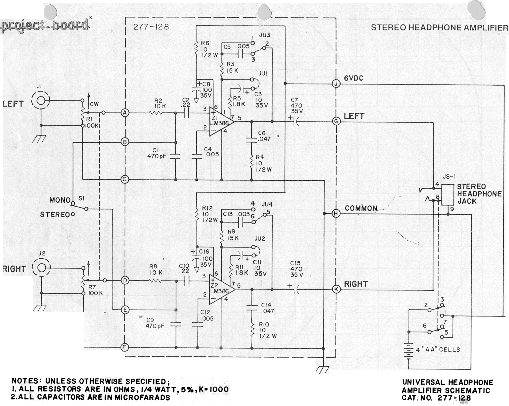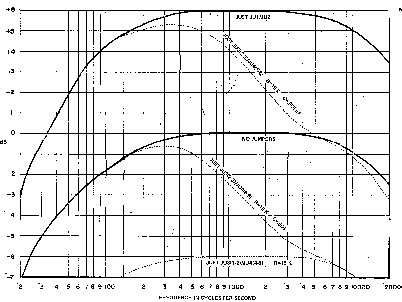

The Universal Headphone Amplifier circuit shown uses the popular LM-386 audio amplifier dip style package. Note the optional pc board connections (jumpers), which show attenuation and de-emphasis ideal for use with (two-way) radio communications receivers. Connect a 1K to 8 ohm matching transformer (in reverse) to make this circuit a line driver (balanced or unbalanced output).

If you follow the amplifier with a reverse connected impedance matching transformer, it might be prudent to add some serious resistive padding (attenuation) to reduce the increased transformer voltage step-up. (Actually, I just wanted to use the word "prudent" somewhere...) I've made many an audio line driver circuit using the lm-386. The added transformer type can be almost anything practical. The transformer output winding wiring allow both balanced and un-balenced outputs.
Switch power to the lm-386 circuit with a typical pnp transistor for audio gating with a receiver cos/cor logic line. The original Wilson Brand of VHF Two-Way Radios used this approach. Another audio mute method is to shunt (ground) the volume pot wiper.
The original diagram depicts a stereo headphone amplifier; you are obviously welcome to build only one lm-386 audio circuit. The downloaded file package contains the full size picture of the option EQ configuration. Multiple jumper options allow you to tailor the frequency response as shown below. The EQ gif picture just below is much lower resolution and text reduction of the actual download supplied gif.

Although the circuit shown operates at 6 Volts DC, modern lm-386 packages can and do operate on voltages as high as 9 and 12 Volts DC. Pay attention when ordering the chip; otherwise assume the maximum operational voltage is 9 VDC. Some suppliers will "sub" the lower voltage package into your order unless you say something.
Another idea is to drive the lm-386 with a high frequency audio source, like the 555 audio oscillator circuit also available on the sonic page. The audio output of the lm-386 can be rectified and filtered for DC. Pretty neat if you need a poor man's negative power supply on a circuit. I saw this idea done in a late 1970's era computer circuit, used to generate a negative supply rail for an early type eprom.
The available file download is in zip format, but you can see the reduced size and lower resolution gif file pictures (shown above) on this description page. Feel free to Email if you have questions.
enjoy
skipp

We/I get a lot of Email from visitors who drop into these file down load description pages
via a web search "engine" (like Google). Vistors are not able to locate the file download
icon for that specific description page. There is a simple way to find the file download
icons on the main http://www.radiowrench.com/sonic sonic
web page...
First and best: Use the menu icon just below to the main sonic page.
Second: Back space out the page your now looking at in your browser location line. As an example,
using the http://www.radiowrench.com/sonic.so2004.html description page. Remove the last portion
of the web location with the keyboard back space key to read http://www.radiowrench.com/sonic
then press your Enter Key to reload the main sonic page "just in front" which would probably
has the inforamation you're looking for. This works on most of the current browsers at most web
sites.
Third: You can always contact me using the Email Icon below. I'll try to get a back to you
asap with a practical answer.
Enjoy, come back when you can...

Copyright ©1998 through 2004